
Different Types of Plastic
Types of Plastic Defined
Please note, the features lists below are characteristics that typically apply to items made from these plastics, but you should always defer to the manufacturers' care and use guidelines.
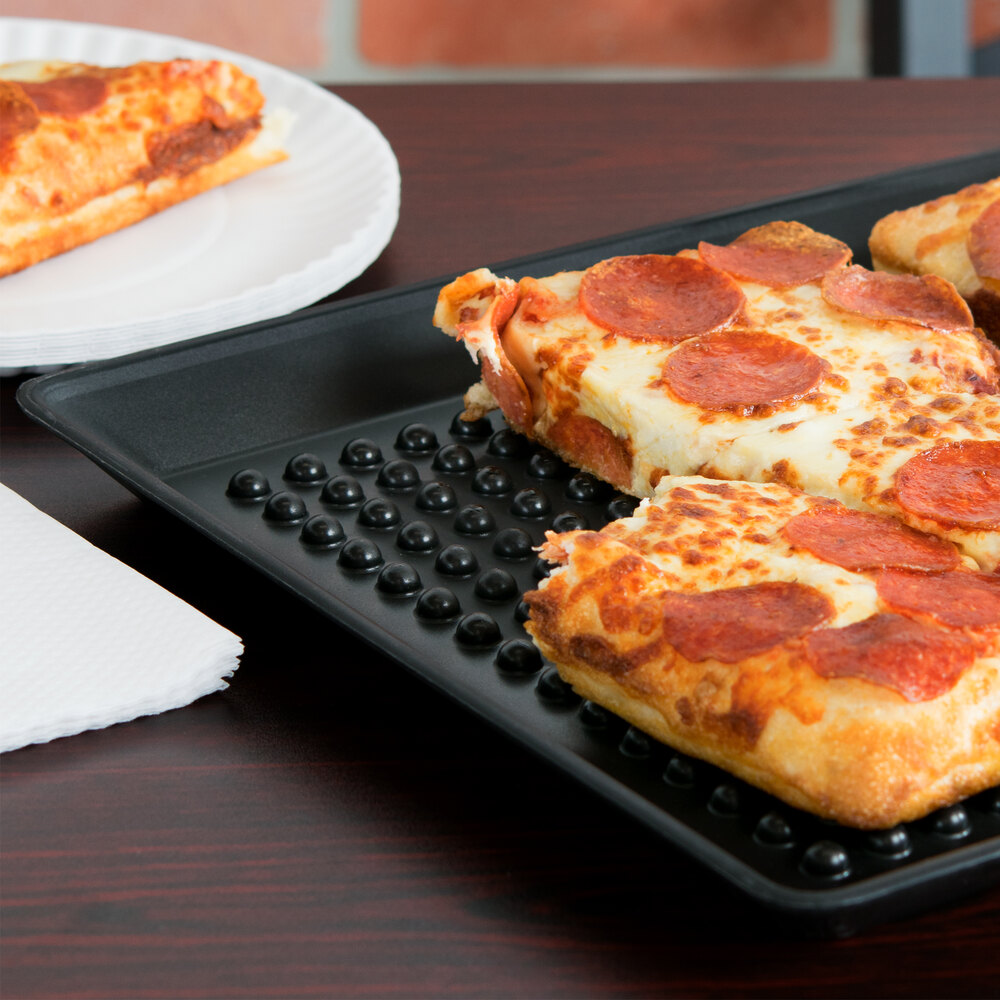
What is Polypropylene?
Polypropylene, often abbreviated PP, is a thermoplastic polymer that is originally opaque in color, though it is often dyed using colored pigments. This hard plastic material is the second most common plastic produced around the world due to its excellent chemical and heat resistance. Sometimes manufacturers will add mineral fillers to polypropylene to create a harder plastic, but this mineral-filled polypropylene loses some of its flexibility and comes in a cloudy white color.
- Features: Safe for use in freezers, microwaves, and dishwashers as well as under heat lamps. Chemical- and heat-resistant. BPA-free.
- Common Uses: Disposable dinnerware/flatware, take-out containers, straws, hot-holding items.
- Recycling Code: 5

What is Polyethylene?
Often abbreviated PE, polyethylene is a thermoplastic homo-polymer that has excellent flexibility and impact strength. It is the most produced plastic in the world. While this material has a low melting point, it makes up for this with its lightweight design as well as its crack- and crush-resistant construction.
- Various forms of polyethylene:
- High-density polyethylene (HDPE) is a denser form of PE that has high tensile strength, making it perfect for items like milk jugs, trash cans, and soap bottles. Not freezer safe.
- Low-density polyethylene (LDPE) has a looser chemical make-up which increases its ductility, or flexibility. This material is great for making plastic bags or film wrap.
- Linear low-density polyethylene (LLDPE) is similar to LDPE, but it is harder to process. It has the same benefits of LDPE but with higher tensile strength, so it is primarily used in film wrap applications.
- Features: Safe for use in freezers. Crack-resistant. BPA-free.
- Common Uses: Take-out containers, deli containers, tumblers, cutting boards.
- Recycling Code: Polyethylene is 1; HPDE is 2; LDPE and LLDPE are 4.
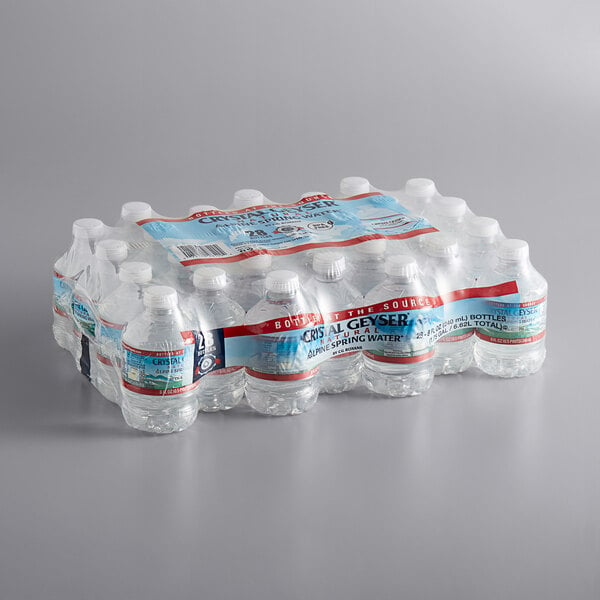
What is Polyethylene Terephthalate?
More commonly known as PET or PETE, polyethylene terephthalate is a thermoplastic polymer resin that is most commonly used as synthetic fiber to create polyester. When made into a plastic it is either rigid or semi-rigid, and in this form it is most often clear or transparent in appearance, though it can be dyed various colors. It is very useful, as it is crack- and crush-resistant while remaining lightweight.
- Features: Safe for use in freezers. Crack-resistant. BPA-free.
- Common Uses: Drink bottles, chemical bottles, tape.
- Recycling Code: 1
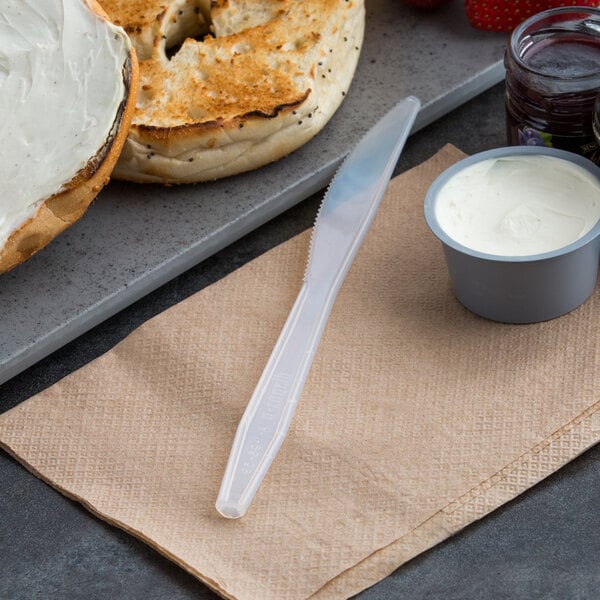
What is Polystyrene?
A simple, naturally occurring chemical called styrene is strung together to manufacture polystyrene (PS) plastic. This material provides better insulation than most plastics and usually comes in a clear color, making it ideal for packaging or storing food. It is very rigid and can be prone to cracking, but it is also lightweight and inexpensive, so your replacement costs will be low.
- Various forms of polystyrene:
- Oriented polystyrene, often abbreviated OPS, can be made from polystyrene and is used to create a thin, clear material that is ideal for simple packaging that needs to tear easily, like packaging individual snacks or flatware. OPS is not microwave safe or BPA-free.
- Features: Polystyrene is safe for use in microwaves. BPA-free.
- Common Uses: Disposable dinnerware/flatware, protective packaging, lids, trays.
- Recycling Code: 6

What is Polycarbonate?
This material, often referred to as PC, is an engineered thermoplastic that is used when durability is your main concern. Clear in its original form, though it is often colored or darkened to be translucent, polycarbonate can be used in applications where glass-like transparency is needed. It is extremely impact- and heat-resistant as well, though it can be scratched or “crazed” fairly easily. Unique to polycarbonate, this plastic also helps protect against UV rays.
- Features: Safe for use in freezers and dishwashers. Impact- and heat-resistant.
- Common Uses: Glasses/goggles, appliances like refrigerators or coffee machines, food storage containers.
- Recycling Code: 7

What is Foam (Expanded Polystyrene)?
EPS, or expanded polystyrene, is formed by taking beads of polystyrene, expanding them with steam, compressing them into a mold, and then steaming it again to form the final foam product. This foam material comes in a variety of densities to best suit its purpose.
- Features: Provides excellent insulation. Economical and lightweight.
- Common Uses: Food/meat trays, egg cartons, cups, take-out containers.
- Recycling Code: 6

Styrofoam is the same as EPS, but it is made using a patented formula. Every company simply creates their foam materials using a slightly different process or formula.

What is PVC?
PVC plastic’s technical name is polyvinyl chloride, and this thermoplastic polymer is made either rigid or flexible during production. The rigid form of PVC is used in packaging applications, but it should not be used to package food. Resistant to chemicals, water, and impact, this rigid form is a lightweight but durable material. The flexible form is used to make signage or replace rubber to protect or cover an item. Both types of PVC are often used in building or electrical applications.
- Features: Chemical- and impact-resistant.
- Common Uses: Film, gloves, placemats, partitions.
- Recycling Code: 3
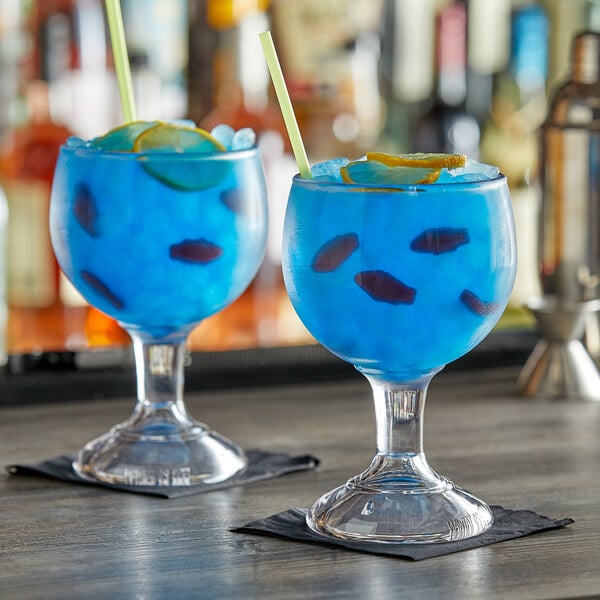
What is SAN?
SAN plastic is actually named styrene acrylonitrile resin and is made of styrene and acrylonitrile, making it an excellent replacement for polystyrene. It boasts excellent thermal and chemical resistance, but is more prone to cracking if dropped. SAN is scratch-resistant as well. Due to its transparency, it is great for use in applications where you need to easily see through the plastic.
- Features: Safe for use in dishwashers. Chemical- and heat-resistant. BPA-free.
- Common Uses: Food storage containers, tumblers, drinkware.
- Recycling Code: 7

What is Tritan?
Tritan is a tough, break-resistant plastic material that was made to fill the need for BPA-free plastic in the market. It is resistant to impact, cracking, shattering, and bending so you can rely on it to last in your establishment. It is an excellent, lightweight alternative to glassware due to its transparency, but it also has a nice hand-feel to promote a more high-end atmosphere that other plastics can’t offer. While the safety of Tritan was once contested by researcher George Bittner, more recent, intensive studies from Eastman, the developer of Tritan, have proven that Tritan is EA/AA-free and completely safe.
- Features: Safe for use in freezers, microwaves, and dishwashers. Impact-resistant. BPA-free.
- Common Uses: Bottles, tumblers, pitchers.
- Recycling Code: 7
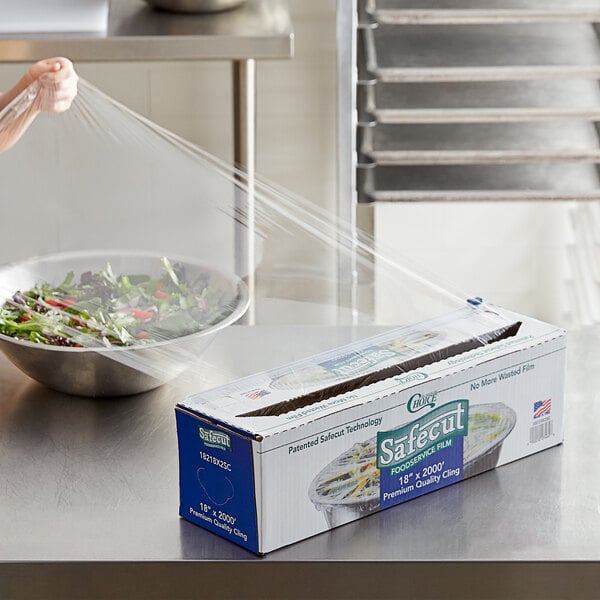
What is Polylactic Acid Plastic?
Abbreviated as PLA, polylactic acid plastic is a thermoplastic polyester material that is made from renewable resources such as corn starch. The main selling feature of PLA is that it is eco-friendly as it is made from renewable resources. However, the material cannot yet be produced at a large industrial scale, has a low melting point, and is fairly permeable so it cannot easily be used to store food long-term. When crystallized during manufacturing, this material can handle slightly higher temperatures.
- Features: Safe for use in freezers. BPA-free and compostable.
- Common Uses: Straws, film wrap, deli containers.
- Recycling Code: 7
Plastic Recycling Codes
- Plastics with codes 1 and 2 are easy to process so they are taken by almost all recycling facilities.
- Plastics with codes 3, 4, 5, and 6 are more difficult to recycle so it depends on your local facility. Check with them before recycling.
- Plastics with code 7 are rarely recyclable so are best thrown out. But you can check with your local recycling facility to confirm.
RIC Code | Plastics | Made into... |
|---|---|---|
 | PET(E) PE | Cloth, storage containers, shoes, luggage, furniture |
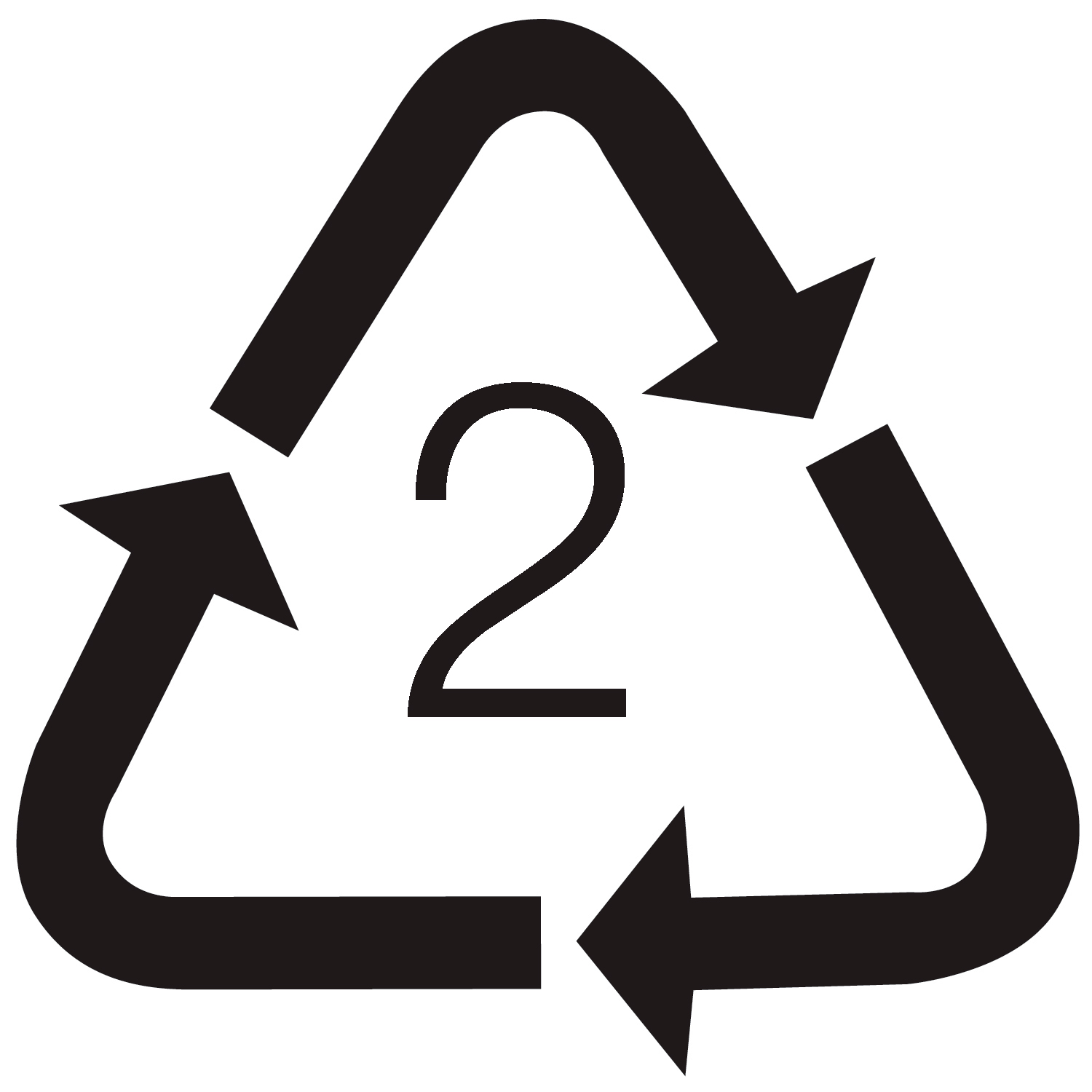 | HDPE | Crates, fencing, bottles, pens |
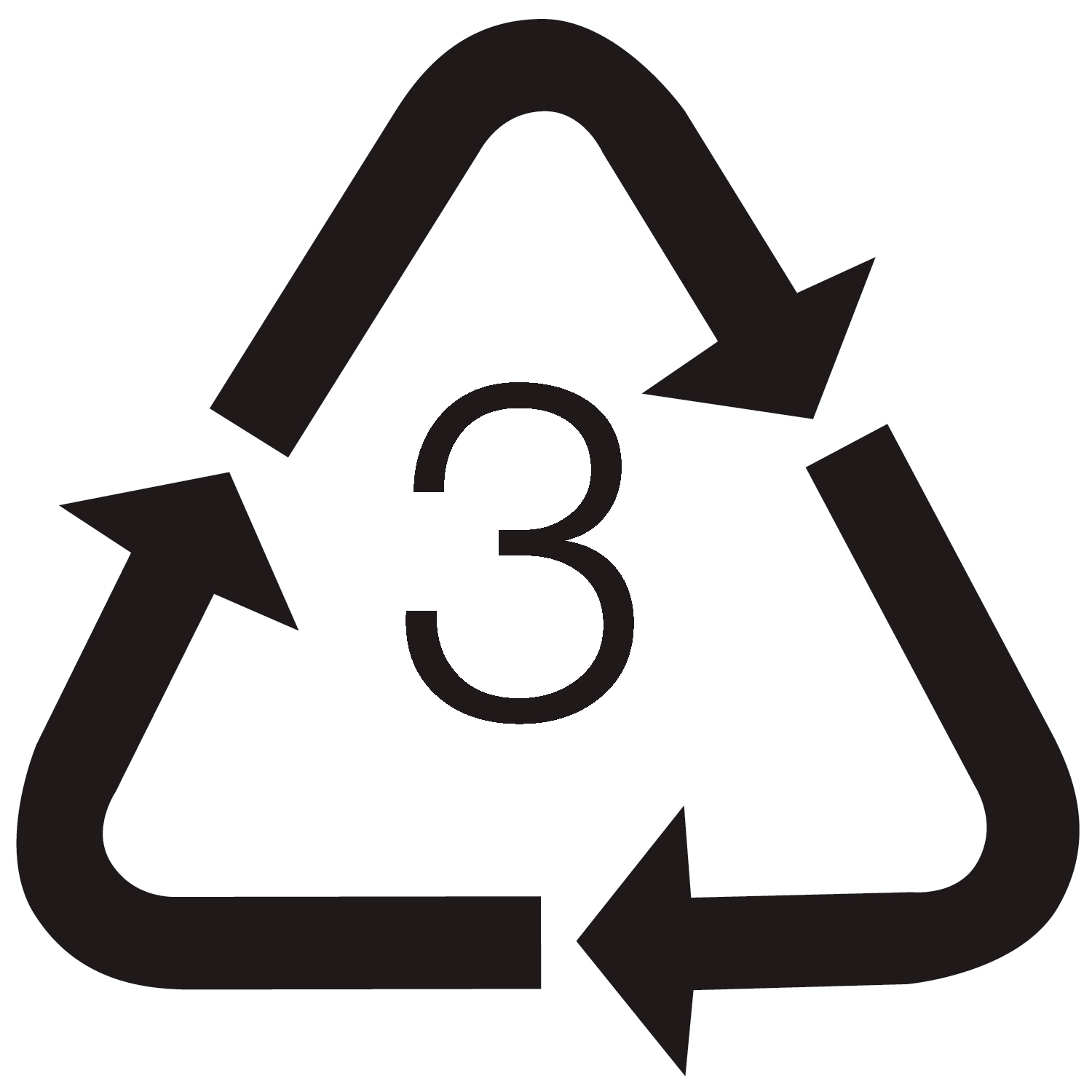 | PVC | Flooring, cables, mats, bubble wrap |
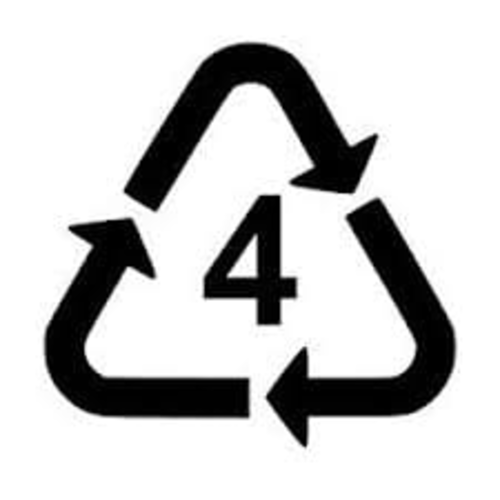 | LDPE LLDPE | Garbage cans, floor tile, paneling |
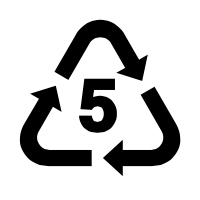 | PP | Brooms, bins, pallets, trays |
 | Polystyrene Expanded polystyrene | Insulation, egg cartons, take-out containers |
 | PC Styrene Other | Plastic lumber |
Why should I use plastic?
If you’re running a foodservice establishment, whether that be a bar, restaurant, or food truck, you may wonder why you would want to use plastic at all. Ultimately, there are many advantages and disadvantages to choosing plastic over typical glassware or ceramics, so you have to decide which option is best for your business.
- Great for outdoor patios or for use poolside since you don't need to worry about the hazards of broken glass.
- Lightweight to make transportation easy for servers and customers alike.
- While many plastic items are reusable, there are also disposable options that are great for single-service use or for take-out applications.
- Kid-friendly material gives parents peace of mind while dining.
- Low price point.
- Potential negative effects the disposal of plastic can have on the environment.
- Difficult to handle piping hot foods and beverages.
- Rarely provides a high-end or sophisticated feel.
- Plastic is more likely to stain or get discolored after extended use.
- Customers may be concerned about BPA and other chemicals in plastics.
Why are some plastics marked BPA-free?

So the question remains, is BPA safe? The FDA has always held that BPA is safe for use in plastic materials. In 2008 it was revealed that the FDA based their assessment off of 2 case studies, and at this point the question about BPA became much more widespread and worrisome as individual states in the US took political action trying to ban the chemical. This spread to other countries as well, as places like Canada and Germany started enforcing bans on BPA. The main concern in all this is the presence of BPA in baby bottles and other infant products, as the negative effects are said to be primarily hormonal, effecting the reproductive organs and puberty progress of children.
However, in 2018 the US National Toxicology Program (a program initiated by the FDA) released a final report on the matter after over 20 in-depth studies were done by federal government scientists. Their findings? That BPA is safe. Their study indicates that consumer exposure to this chemical is low to begin with, well below safety limits, and the BPA that is introduced to the body is quickly and naturally eliminated. At these levels, there is no evidence of any reproductive, developmental, or health effects.
Related Resources

What Is Tamper Evident Packaging?
Tamper evident food packaging is designed with special closures that make it apparent if the container has been opened, unsealed, or broken. If you're selling packaged items, broken closures alert you to potential product tampering so you can dispose of the item. Most importantly, it assures the customer that the items they purchase are fresh, safe, and haven't been handled by anyone after being packaged. Tamper evident packaging is so common in the food and beverage industry that you probably take it for granted. You'll find that most bottled beverages feature a twist cap, and you intuitively know that if the cap has been twisted off, the beverage has been opened. But what about tamper proof packaging for takeout food orders? Tamper eviden
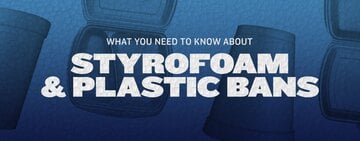
Plastic and Styrofoam Bans
Plastic and styrofoam bans have become increasingly prevalent across the United States in recent years. As a foodservice operator, it's crucial to understand the importance of these bans and how they can impact your business. Complying with these bans can help you avoid potential fines and legal issues. By staying informed and proactive, you can navigate the changing landscape of plastic and foam bans and position your business to become more sustainable . This page has been updated as of January 2024. Because these laws change regularly, readers of this site should be familiar with applicable state laws and restrictions. Shop All Eco-Friendly Disposables Click below to learn more about plastic and styrofoam bans: Styrofoam Bans Styrofoam A

What Do Plastic Recycling Symbols Mean?
Many foodservice businesses are interested in recycling the plastic bags and containers they use to store, prepare, and keep their food fresh. However, it can be difficult to determine what can be recycled and how to properly recycle these materials. Check out the infographic below to learn how plastic recycling numbers and symbols can help you determine how to recycle your waste, potential risks of each plastic, and what these products are recycled into. What Are the Seven Main Plastics? The seven main types of plastic resins are polyethylene terephthalate (PETE), high-density polyethylene (HDPE), polyvinyl chloride (PVC), low-density polyethylene (LDPE), polypropylene (PP), and polystyrene (PS). The seventh category is designated as "othe
- Topics 1346
- Industrial 55
- Troubleshooting Guides 21
- Restaurant Management 128
- Bar Management 55
- Catering Tips 35
- Bakery Management 42
- Food Trucks & Concessions 49
- Advertising & Marketing 37
- Eco-Friendly Tips 11
- Facility Layout & Design 41
- Coffee Shop Tips 28
- Installation & Maintenance 51
- Janitorial & Pest Control 30
- Safety & Sanitation 88
- Startup Tips 104
- Menu Design 10
- Kitchen & Cooking Tips 81
- Hospitality Management 23
- Pizza & Sandwich Shop Tips 36
- Smallwares 37
- Food Prep 88
- Tabletop Items 17
- Disposables 22
- Calculators & Tools 6
- Consumables 52
- Warewashing & Laundry 18
- Cooking Equipment 90
- Food Storage & Refrigeration 51
- Beverage Equipment 34
- Office Supplies 6
- Resource Type
- In-Depth Articles272
- Buying Guides296
- How-Tos93
- Product Reviews77


